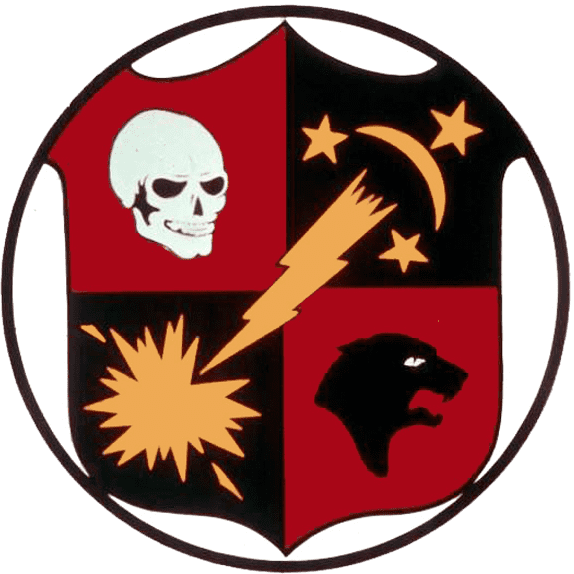Active 1944–1963 Nickname(s) Blue Nemesis | Country United States Type fighter | |
 | ||
Role all weather interceptor | ||
All Weather Fighter Squadron 3 (VF(AW)-3) was an aviation unit of the United States Navy established in 1944 and deactivated in 1963. From 1955 to 1963, it was the only U.S. Navy unit assigned to the North American Air Defense Command.
Contents
Night Fighter Training
VF(AW)-3 was established on 22 August 1944 as the "Navy Air Training Unit-Pacific (NATUPAC)" at Naval Air Station Barbers Point, Hawaii. Following World War II, it was redesignated "Night Defense Squadron Pacific" on 6 April 1946 and Composite Squadron, Night 1 (VCN-1) on 1 August of the same year. Two years later, it was again renamed "Fighter All Weather Training Unit Pacific (FAWTUPAC)".
Korean War
At the same time Composite Squadron 3 (VC-3) Blue Nemesis was established on 20 May 1949. VC-3 provided night fighter detachments aboard the aircraft carriers of the Pacific Fleet, flying the F4U-5N Corsair. Its aircraft were heavily engaged in the Korean War, and Lt. Guy Bordelon of VC-3 became the only U.S. Navy "ace" during the war, after shooting down his fifth enemy plane on 16 July 1953, while detached ashore from the USS Princeton (CVA-37). After the war, the F2H-3 Banshee replaced the Corsair. The squadron was redesignated All-Weather Fighter Squadron 3 (VF(AW)-3) on 1 July 1956 and disestablished on 2 May 1958.
North American Air Defense Command
On the same day, the Fighter All Weather Training Unit Pacific took over designation and nickname of VF(AW)-3. In 1955, when the U.S. Navy established the Atlantic and Pacific Barriers, VF(AW)-3 became the only U.S. Navy fighter unit assigned to the North American Air Defense Command to detect and defend against enemy aircraft. The squadron flew the F3D-2 Skyknight until 1959. In 1957, VF(AW)-3 began transitioning to the F4D-1 Skyray, receiving its first six aircraft during that year. When the transition was complete, the squadron was equipped with 25 F4Ds, based at Naval Air Station North Island at San Diego, California.
VF(AW-3) was assigned to the 27th Air Division of the United States Air Force at Norton Air Force Base. Radar coverage was provided by an Air Force early warning radar site on Mount Laguna, code-named “Anderson.” In the late 1950s, the squadron averaged one or two actual scrambles and two or three training sorties per day. VF(AW)-3 consistently outperformed USAF interceptor squadrons in scramble time and intercept effectiveness. VFAW-3 won NORAD’s "best performing unit" trophy, twice. The squadron also maintained an excellent safety record and superb aircraft-readiness rates. It benefitted in these fields from the proximity of the Douglas factory in Los Angeles.
After "Anderson" identified a target, VF(AW)-3 routinely scrambled two F4Ds in three minutes. In an emergency, all 25 aircraft could be scrambled in less than two hours. The Air Force radar vectored the aircraft to within 45 km of the contact, and the F4Ds completed the intercepts using their onboard radar, attempting to identify the contact without its being aware of their presence.
On 29 March 1957, LtCdr Patrick F. Cunningham had an in-flight emergency and had to bail out of his A4D-1 fighter (BuNo 139924) over San Joaquin Valley, California. In response to the Second Taiwan Strait Crisis, VF(AW)-3 aircraft deployed to Taiwan, in 1958.
Cuban Missile Crisis
After the Cuban Revolution, VF(AW)-3 also provided a detachment of six aircraft ("Detachment Echo") at Naval Air Station Key West, Florida, in 1961, under control of the Continental Air Defense Command (CONAD). The crews were rotated every eight weeks. In January 1962, after Cuba had received Mikoyan-Gurevich MiG-21 fighters, VF(AW)-3 kept four F4Ds on five-minute alert at all times.
From 24 October to 31 December 1962, Detachment Echo of VF(AW)-3 received the Armed Forces Expeditionary Medal for participating in the Cuban Missile Crisis of 1962; at NAS Key West.
VF(AW)-3 was decommissioned in April 1963.
